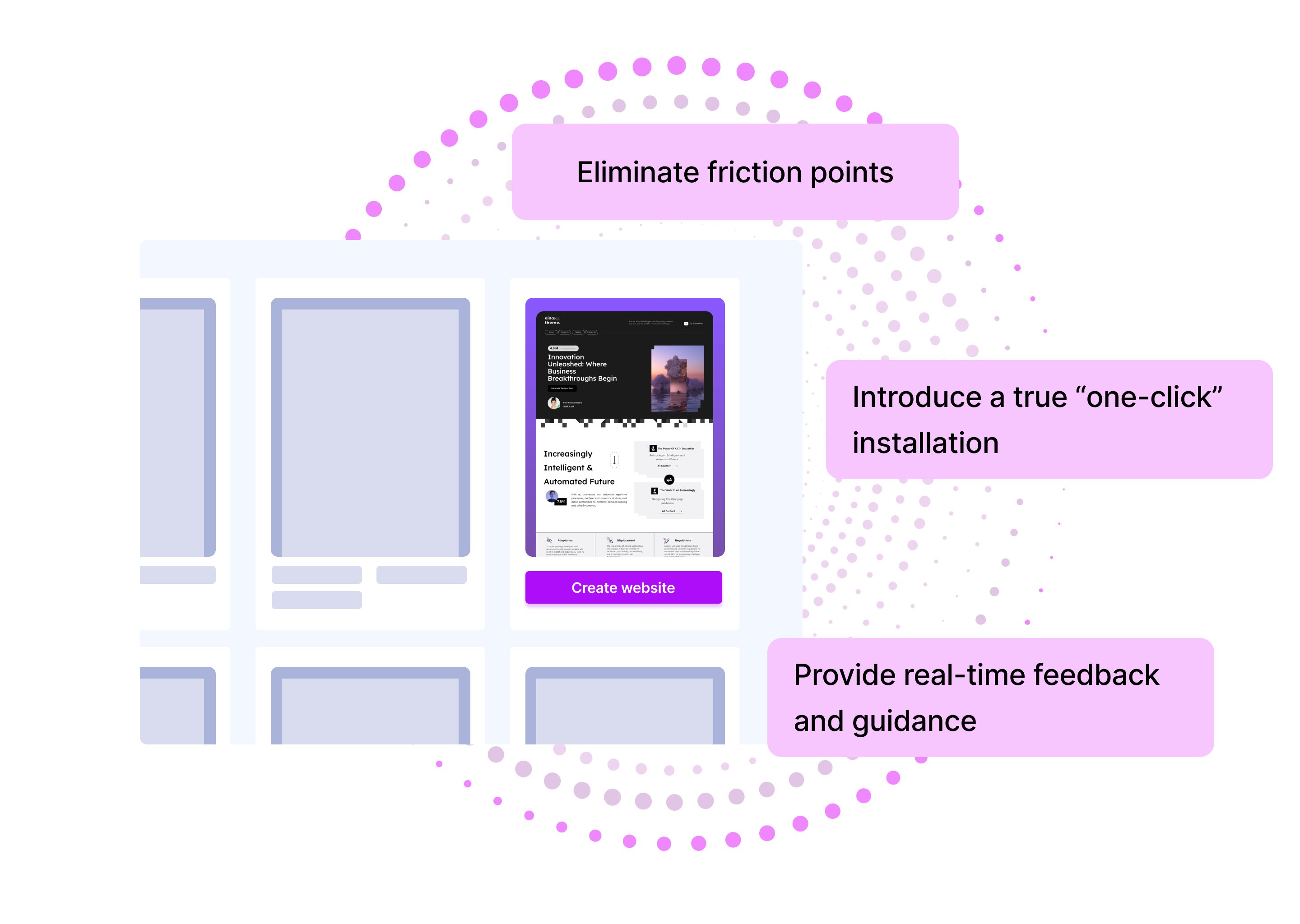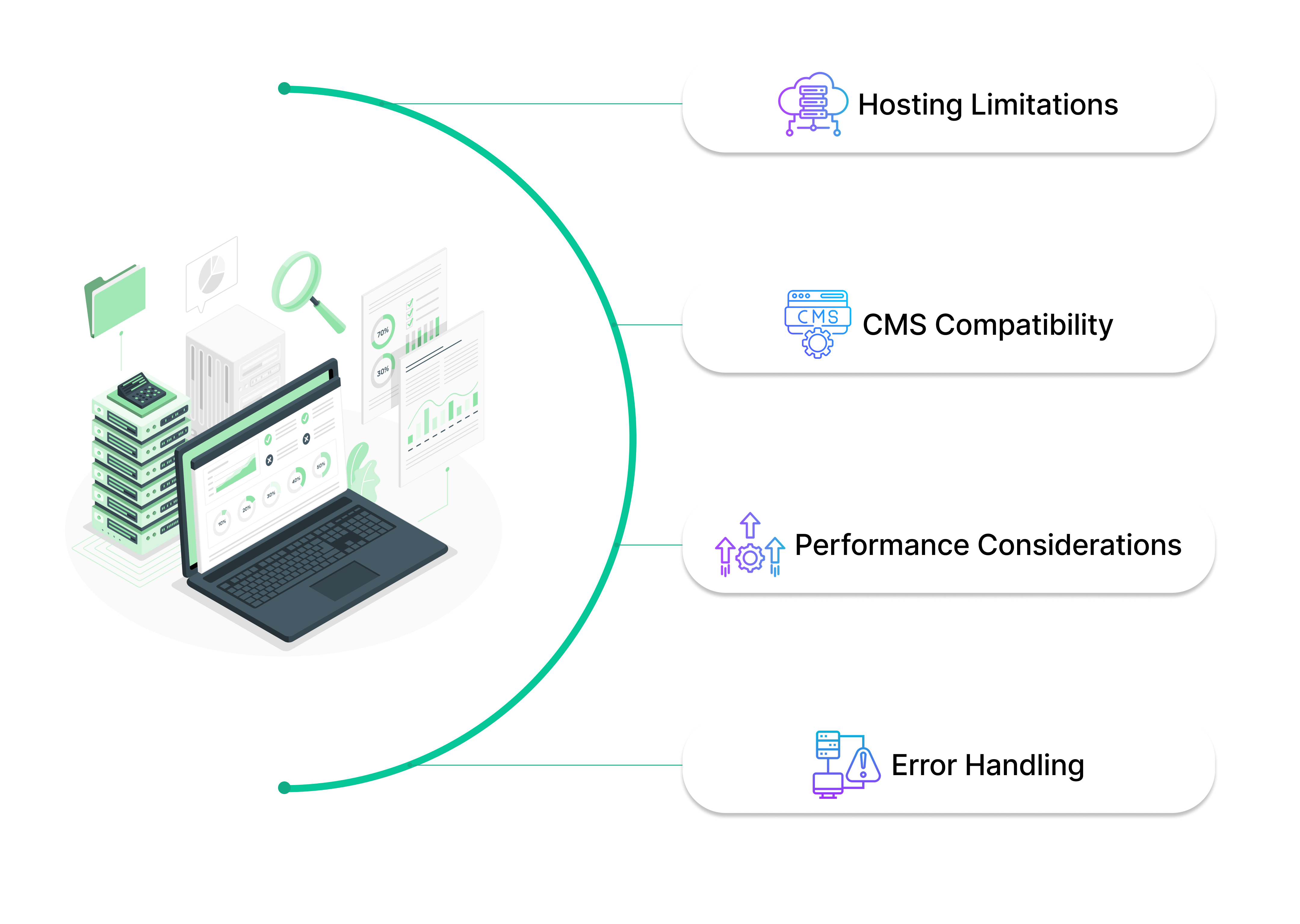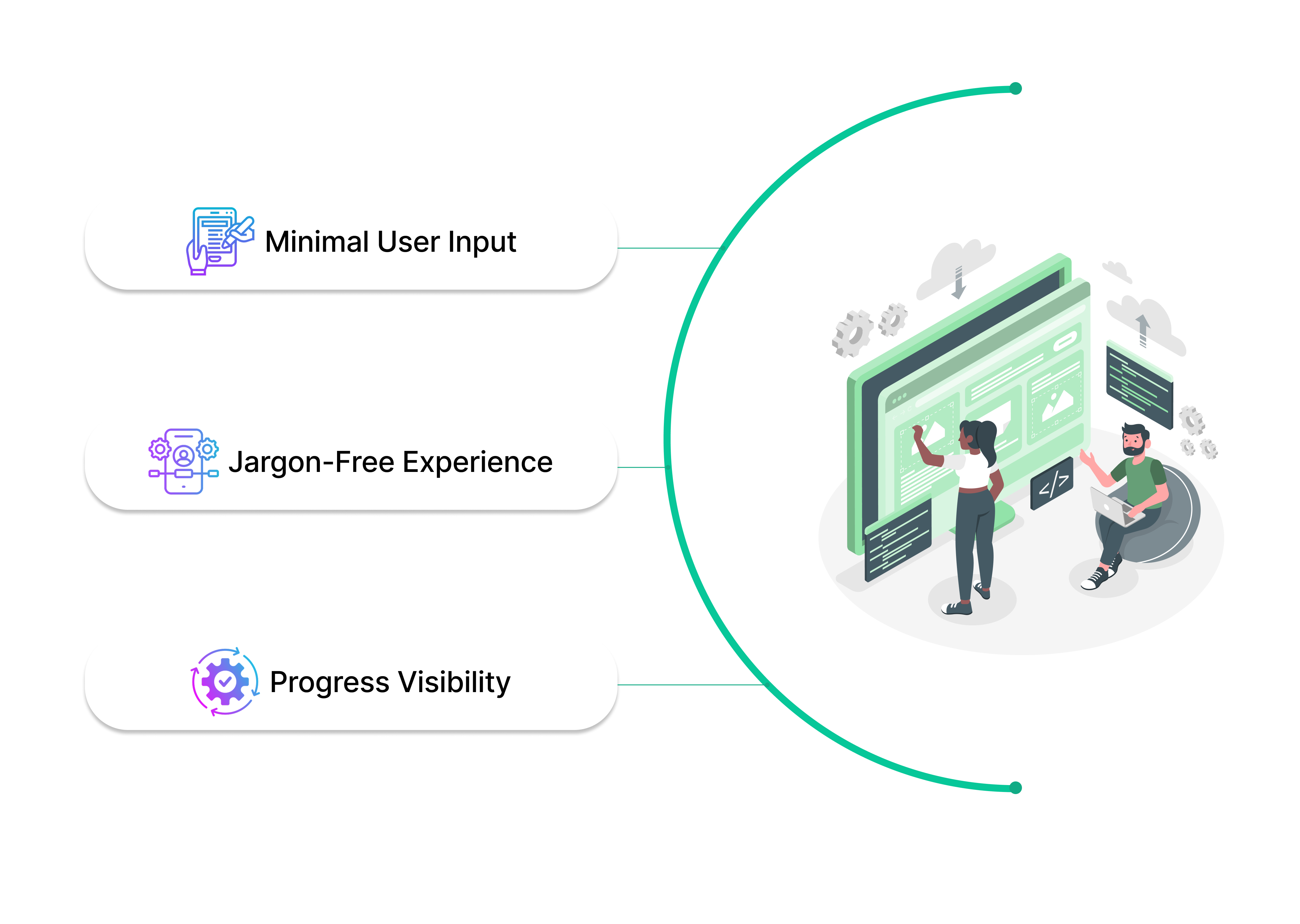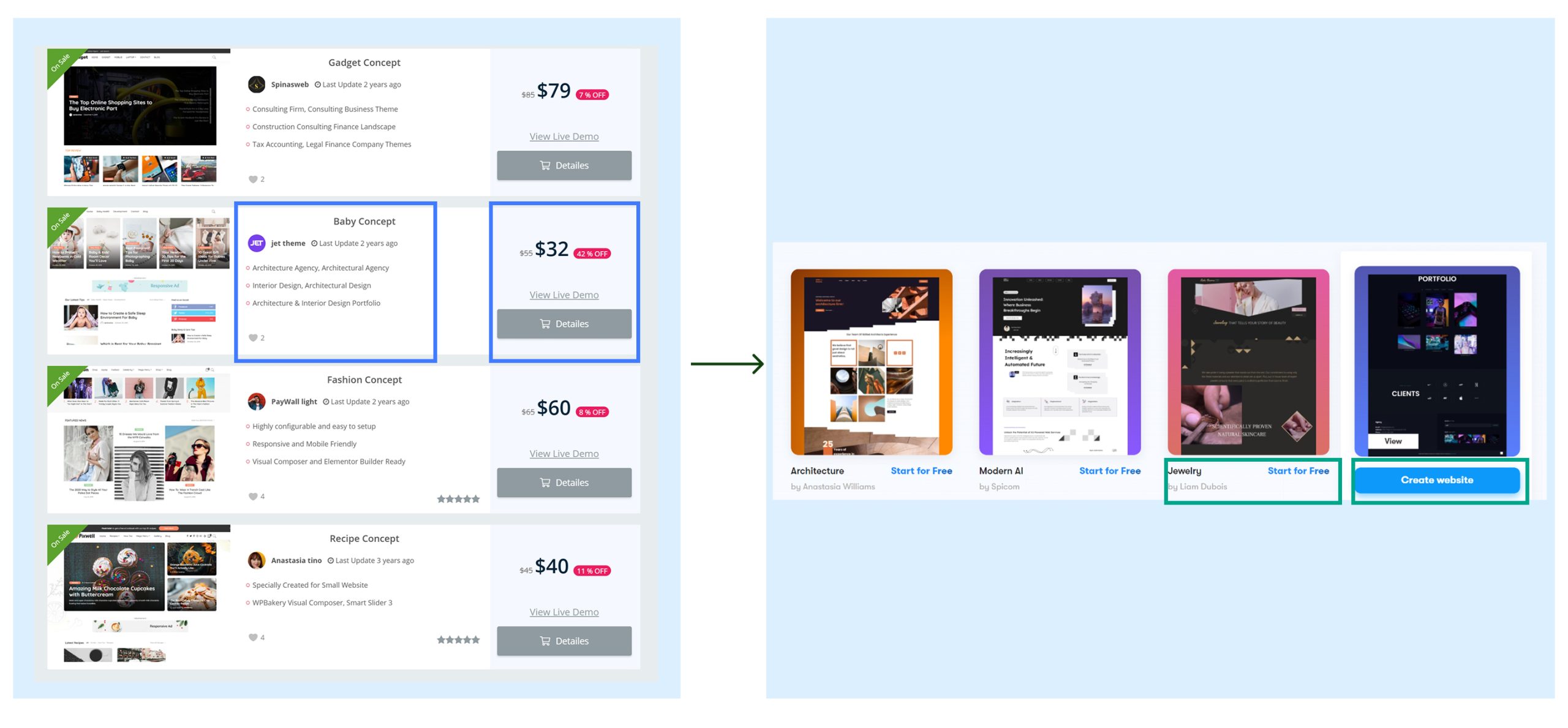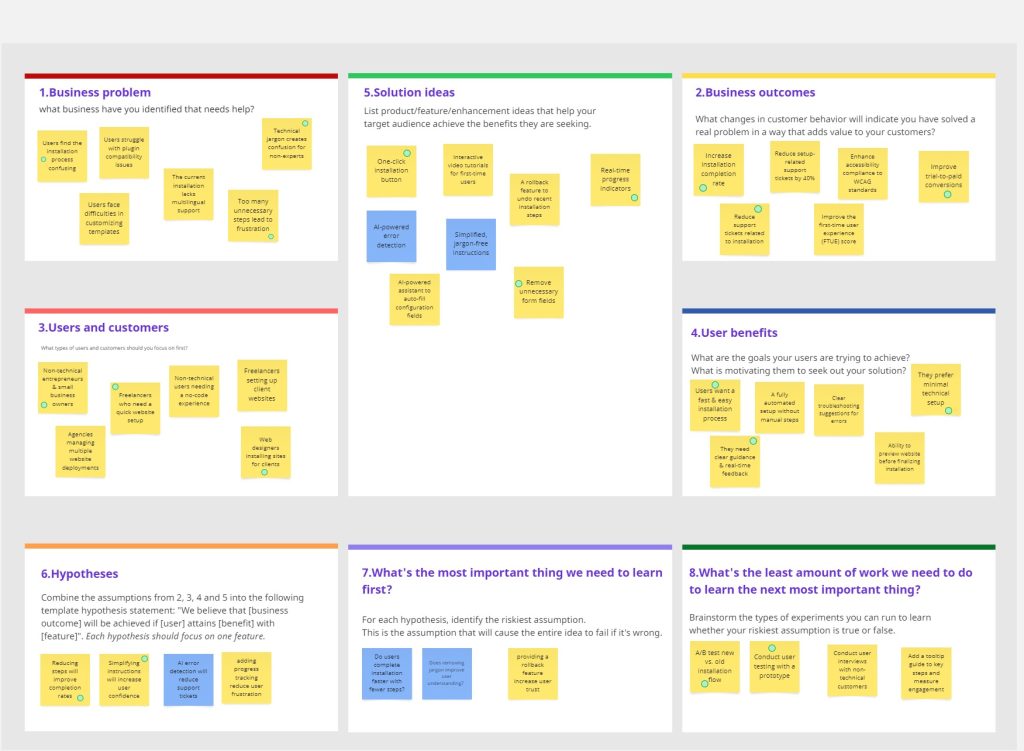Overview
Spicom is known for its ability to let users install and launch a website in seconds, but the existing installation process was causing frustration due to unnecessary steps, technical complexity, and lack of clear guidance. Many users abandoned the setup midway, leading to a high drop-off rate and an increase in support tickets. To address this, I redesigned the installation flow to create a true one-click experience, eliminating redundant steps, simplifying instructions, and integrating real-time feedback. The new design significantly reduced setup time, improved user confidence, and increased trial-to-paid conversions, making the onboarding process smoother and more efficient.

